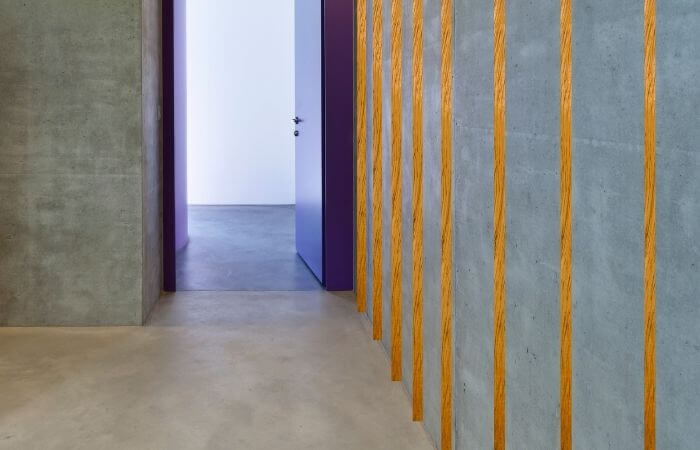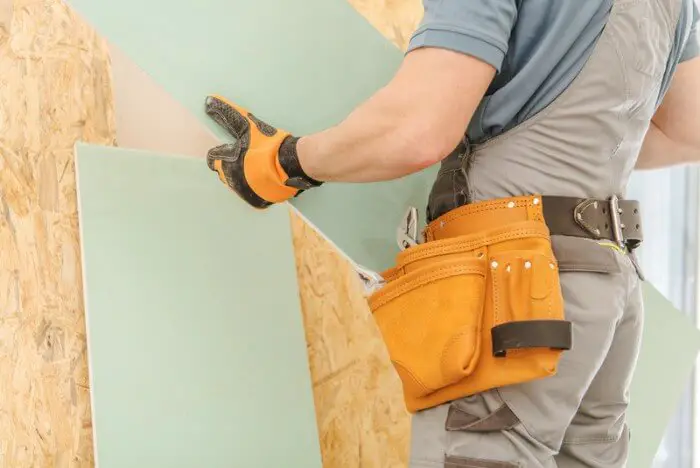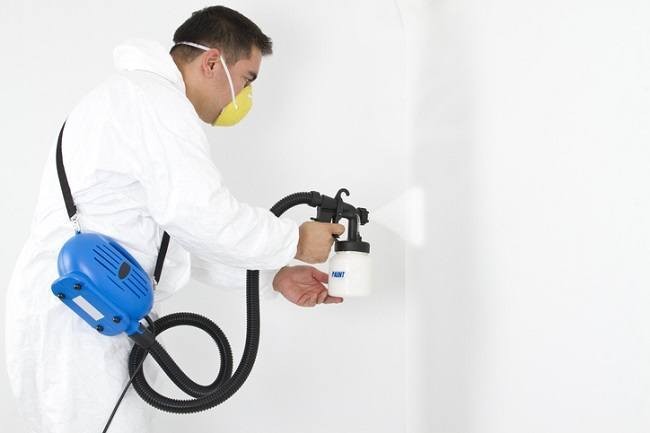Concrete is perceived as being a great soundproofing material, however this is not entirely true.
Yes, concrete is great at stopping air-borne sound, such as someone talking, from passing through it, but it is not good at preventing impact vibrations traveling through it.
This is because it is completely dense, if you hit it with a hammer the vibration will travel all the way directly through it into the adjacent room.
If the wall had a cavity in it this would prevent the vibration from traveling into the next room.
Unfortunately very few concrete walls have cavities in them, so if you are running a gym or just live somewhere where impact vibrations are common then your concrete walls won’t do a great job of keeping sound out.
Here are a few things, listed in order of effectiveness, that you can do to soundproof your concrete wall:
1. Install A Stud Wall
Fitting a stud wall over your existing concrete wall can be a good way of preventing impact noise from travelling into the room.

However, if you choose to do this it is important that you avoid a common mistake.
Do not secure the drywall directly to the studs.
The studs will be secured directly to the concrete wall so if you secure the drywall directly to the studs then impact vibrations can travel straight through the studs and into the room.
The noise will sound just as loud and you will have done a whole lot of work for nothing!
Instead, you must ensure that once the studs are installed you then fit what are called resilient channels across them.
- Decouples drywall layer from the supporting stud structure to reduce sound transmission through walls
- Installation information provided
- Product is used to hang drywall instead of attaching to studs
Resilient channels are thin metal rails that reduce direct contact between drywall and the wall studs.
They are a very effective way of soundproofing any wall.
Instead of securing drywall directly to the timber frame, the resilient channel is secured to the timber frame and the drywall is secured to the resilient channel.
The resilient channel is designed in a way that means it significantly weakens any sound waves that travel through it.
It features a long microchannel which sound waves have to travel along. By the time they complete their journey the sound waves have lost a significant amount of their sound energy.
2. Use Double Studs
An alternative to installing a stud wall with resilient channels is to build a stud wall with two rows of studs with a gap inbetween them.
The first set of studs are secured to the concrete wall, the second set of studs are only secured to the stud frame at the top and bottom.
This means that when you attach the drywall to the frame there will be no direct path for vibration to travel from the concrete wall into your drywall thus effectively soundproofing your concrete wall.
Be aware that this method causes the stud wall to use up more floor space, so if space is tight then avoid this option.
3. Use Soundproof Dry Wall
Soundproof drywall also known as soundproof plasterboard or sound dampening gypsum board, has an extra layer sandwiched in the middle which is made up of gypsum, viscoelastic polymers and ceramic material.

These form a layer in the drywall that helps dampen any impact vibrations that meet it.
This type of drywall can be fitter directly onto a concrete wall without the need for any studs.
Be aware it is generally quite a bit more expensive than standard drywall.
4. Use Blanket Insulation
Blanket insulation is great at absorbing sound.

If you are fitting a stud wall then filling the cavity with blanket insulation can help further dampen impact sounds.
However do not overpack the cavity with insulation as if the insulation is too dense this will allow vibrations to travel through it, ideally there should still be a small air gap left in the cavity.
5. Seal Up Any Cracks
Cracks in a concrete wall can potentially allow airborne sound to travel all the way through, they can also make impact sounds seem louder.
Use an epoxy based sealant t seal up an cracks.
Epoxy does take a long time to dry but it will eventually become as hard as concrete.
Alternatively you can use a polyurethane based sealant, this will not dry anwhere near as hard as epoxy and offers no structural repair however if your only concern is preventing noise transfer then it will definitely help.
6. Use Soundproof Paint
Soundproof paint is a product that genuinely exists, all you need to do is paint your concrete wall with it, and voila…soundproofing done!

It sounds good be but aware even the very best soundproof paint will never be anywhere near as effective as a pretty much any of the soundproofing solutions we have mentioned above.
It is best used to help tune out very faint background noises or to compliment other soundproofing methods.
If you do choose to use paint be aware you will need a considerable number of layers to make any notable impact.
We recommend you use explore all other options before resorting to paint.
As an Amazon Associate I may earn a small fee from qualifying purchases at no extra cost to you. This helps us run the site, so thanks for your support!

